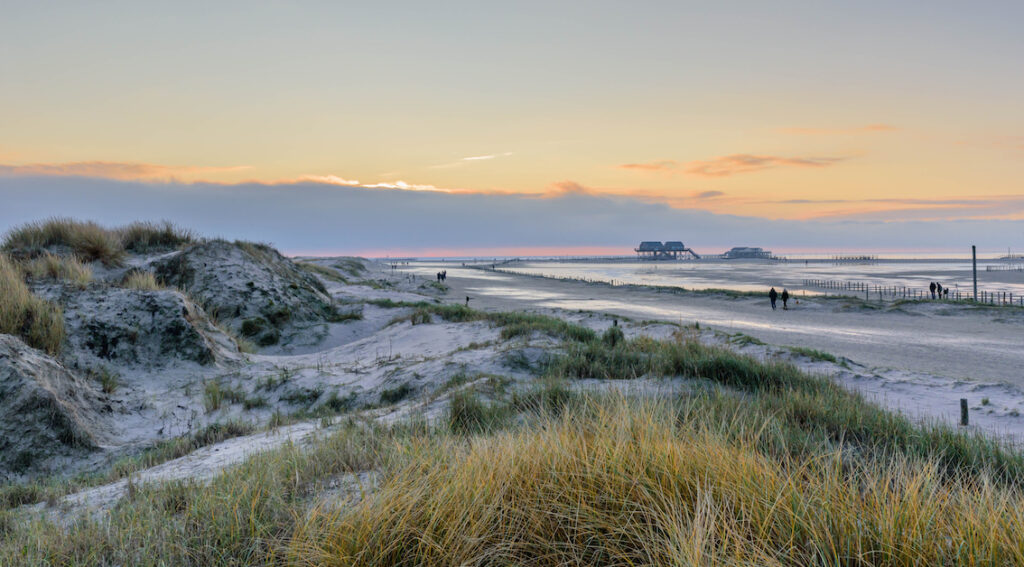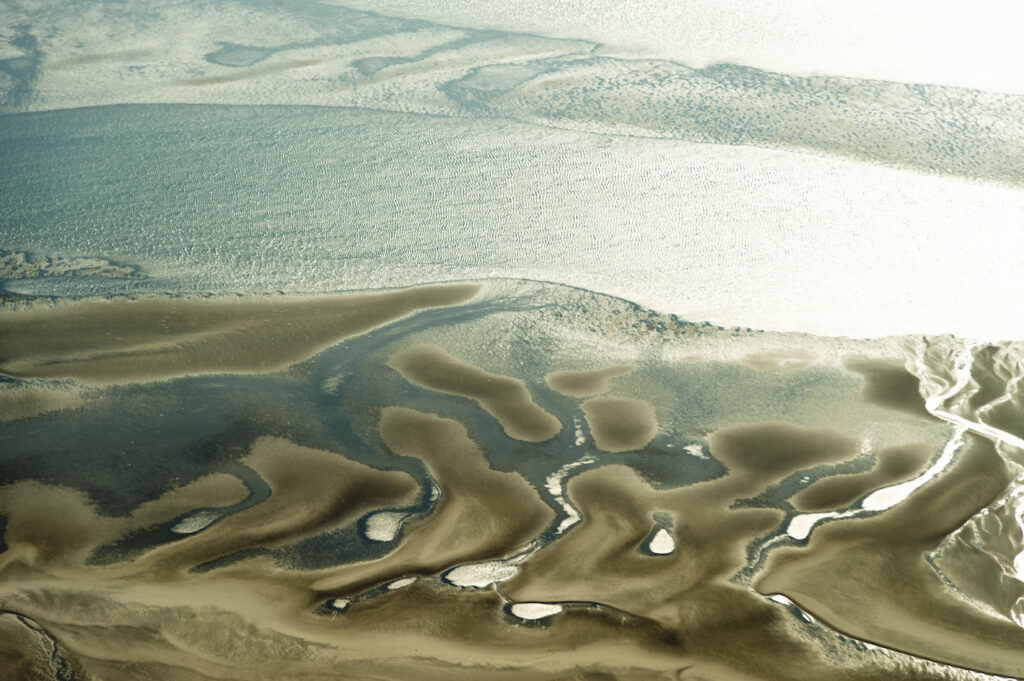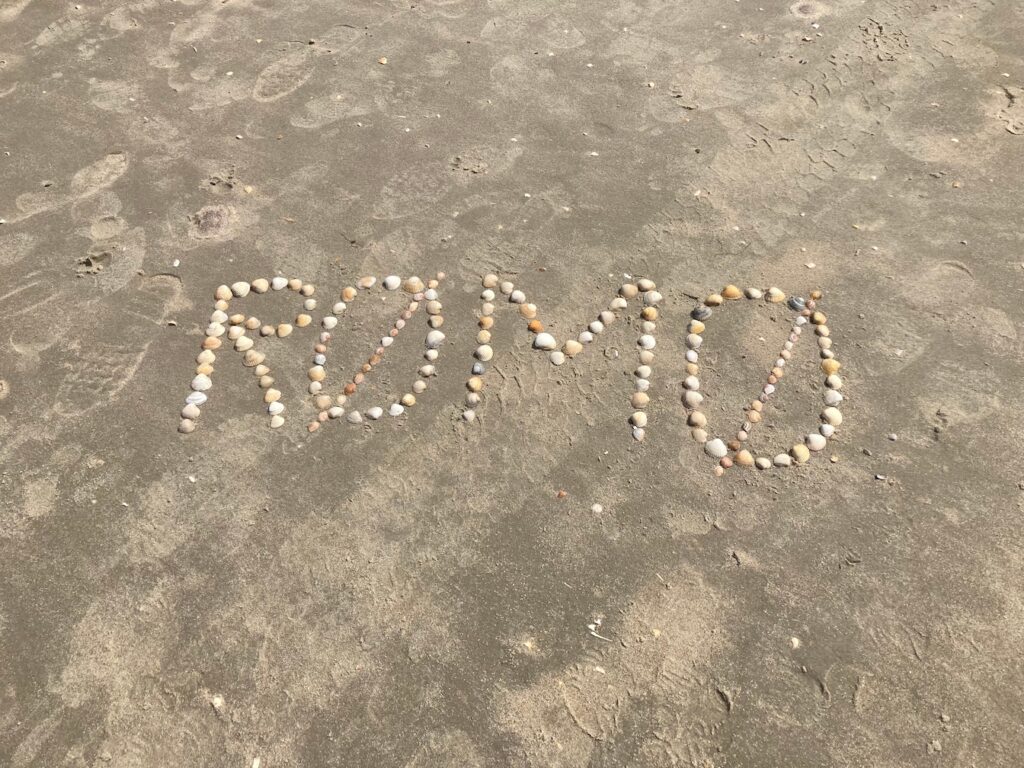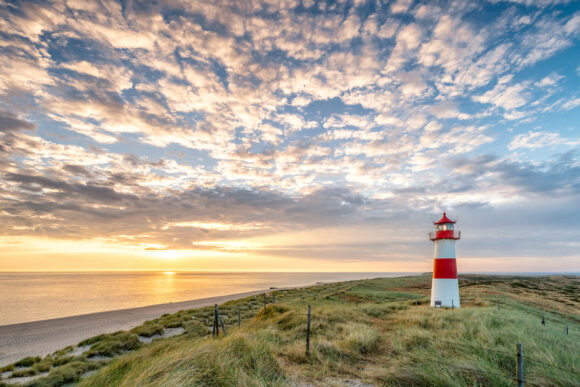The Wadden Sea, a UNESCO World Heritage site, is so beautiful and so distinct that Germany’s portion of it comprises not one, but three, national parks. Schleswig-Holstein Wadden Sea National Park, the northernmost of the three and the largest national park in Germany, reaches from the mouth of the River Elbe up to the Danish border. With more than 250 species of plants and animals inhabiting the largest unbroken system of intertidal sand and mud flats in the world, this incredibly diverse place makes for an excellent trip year-round. Here are three tips for making your visit a memorable one.
 Snapshot freddy / Shutterstock.
Snapshot freddy / Shutterstock. Don’t miss the Dithmarschen
The Dithmarschen is a region with huge expanses of mud flats and salt marshes, and the place is pure seaside. Wind in your hair, the sound of birds crying. On sunny days, it feels like the world stretches forever. Rainy days make you grateful for good coats and warm restaurants when all is said and done. And as a bonus: the place is absolutely teeming with things to do.
First things first: be on the lookout for wildlife. As you walk dikes and wooden paths through salt marshes, you can’t miss the birds, which include geese, ducks and sometimes the rare European sea eagle. It’s not just winged things, either. In the waters around the Dithmarschen, you can find harbor seals, woodpecker seals, and loads of fish – including sturgeon.
 bluecrayola / Shutterstock.com
bluecrayola / Shutterstock.com One of the coolest national park visitor centers in Germany can also be found next to the Dithmarschen. Known as the NABU National Park House Wattwurm, the center doesn’t disappoint: the curving building looks a lot like a lugworm! It offers an amazing perspective on the park, and is well worth a visit. As a bonus, wild ponies roam the grounds outside the visitor center.
Be on island time
During the summer months, especially, Schleswig-Holstein Wadden Sea National Park has much to offer. Like islands – seven of them, to be exact! While all of the islands have something to offer visitors (and make sure not to confuse Helgoland, with its excellent red cliffs, with Legoland, just a bit further up the road in Denmark), two in particular are worth your time.
 Bloodyamateur / Shutterstock.com
Bloodyamateur / Shutterstock.com Amrum is the first. And it is extraordinary. A narrow little 10 by 1.5 kilometer stretch of land, it offers staggering beauty at every turn – white sand, windswept dunes and wild grass. Hedgehogs love the place. And in the right season, you’ll feel as if you’re standing on the last patch of ground in the world. It’s savage, and it’s beautiful.
Sylt is another great island to visit, mostly because there’s so much to do, and because it’s a bit of a polar opposite compared to Amrum. Sylt is where you come when you want to have a good time. It’s got tourist beaches, resorts, restaurants, cycling – the works. During the summer, it’s almost impossible to find a place to stay (so plan ahead).
Cross the border into Denmark
If you’re making the trip to Germany’s northernmost point, why not add a Scandinavian country to your itinerary? One of the best places to visit is Rømø, a dune-laden island that has one of the widest beaches (more than 2 kilometers in some places, which is just massive for a beach) in Northern Europe.
 Climate Fokke / Shutterstock.com
Climate Fokke / Shutterstock.com Rømø’s dunes are special, too, because they don’t stop growing – inching west every year, thanks to the wind and the water. And, if you’ve got kids, then you actually could do both Helgoland and Legoland, which is just a little less than two hours up the road from the northern end of the national park.
Getting to Schleswig-Holstein Wadden Sea National Park
By car, the park is approximately 6.5 hours from Kaiserslautern, 6 hours from Wiesbaden, and 7.5 hours from Stuttgart.








